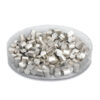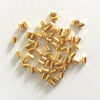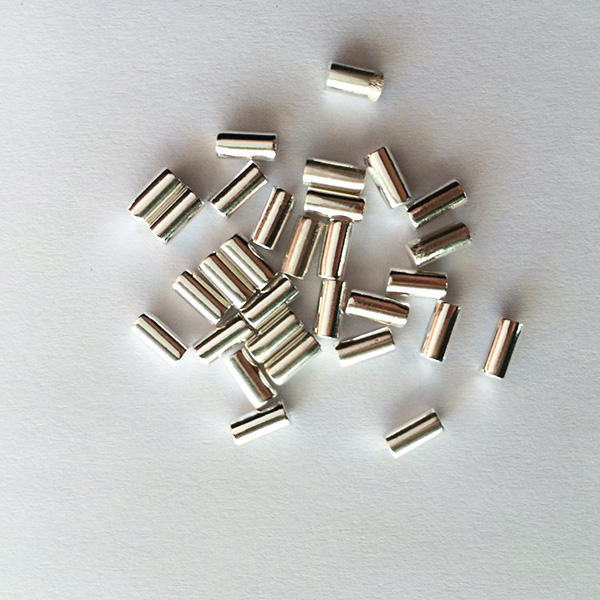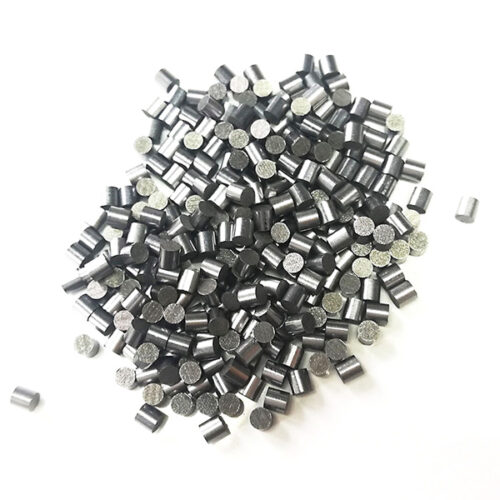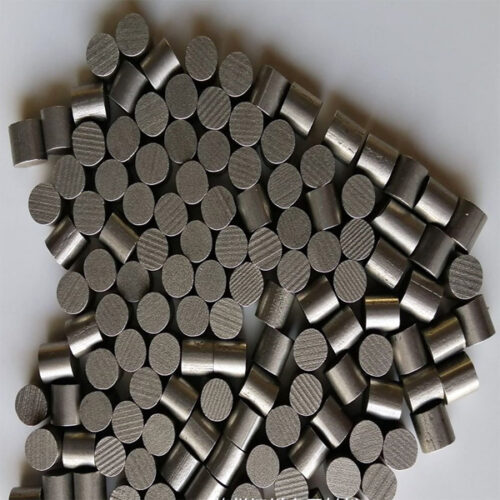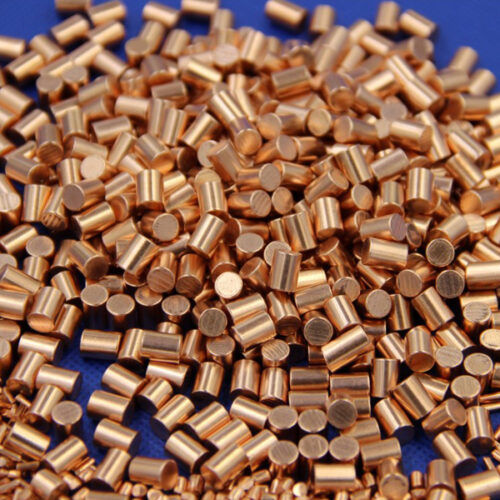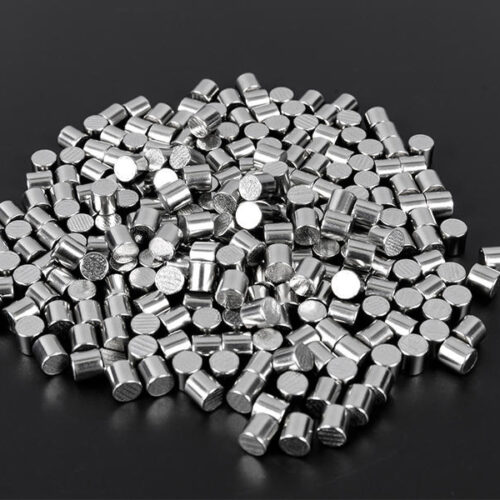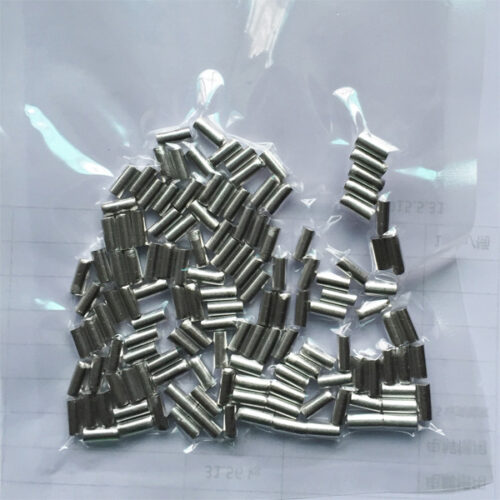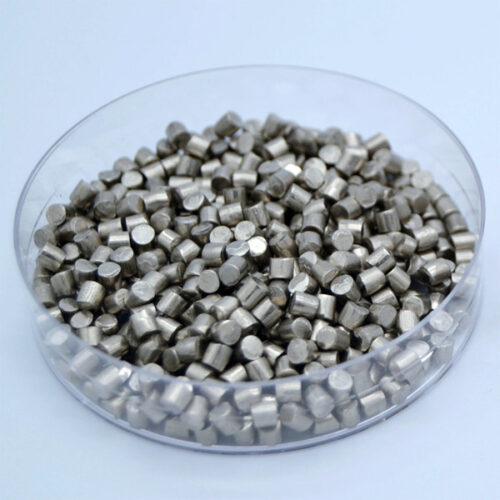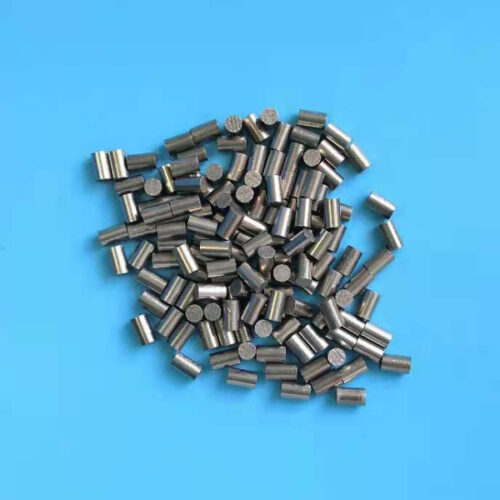4N5 (99.995%) Silver (Ag) Pellets Evaporation Materials
Introduction:
Silver evaporation materials are solid silver-based substances that engineers specifically design for use in thermal evaporation processes. These materials usually take the form of pellets, rods, wires, or other shapes suitable for vaporization in a vacuum environment.
During the thermal evaporation process, the solid silver material undergoes heating to its vaporization temperature, which causes it to transition directly from a solid to a vapor state. Subsequently, the vaporized silver condenses onto a substrate surface, forming thin films or coatings with desired properties.
Properties of Silver Evaporation Materials:
1. Exceptional Conductivity
Silver boasts the highest electrical conductivity of any metal, making it indispensable in electronic applications for efficient energy transfer.
2. Exceptional Thermal Conductivity
Silver also exhibits exceptional thermal conductivity, facilitating heat dissipation in electronic devices and thermal management systems.
3. High Reflectivity
Silver’s high reflectivity enables its use in optical coatings and mirrors for enhancing light reflection and visibility.
Applications:
1. Electronics
Silver is utilized in electronic components, such as electrical contacts, conductors, and connectors, due to its conductivity and reliability.
2. Optics
Silver-coated mirrors and optical components leverage its reflectivity and durability for optical systems and instruments.
3. Catalysis
Silver catalysts play a vital role in chemical reactions, enhancing reaction rates and selectivity in various industrial processes.
4. Biomaterials
Silver is employed in biomaterials to prevent infection, owing to its antimicrobial properties, making it suitable for medical implants and wound dressings.
5. Water Filtration
Silver nanoparticles are utilized in water filtration systems for their antibacterial properties, contributing to clean and safe drinking water.
Manufacturing Processes:
1. Silver Alloy Preparation
Silver feedstock may undergo alloying processes to tailor its properties for specific applications, such as improved hardness or corrosion resistance.
2. Evaporation Source Fabrication
Molten silver is solidified into various forms, such as pellets, rods, or wires, suitable for use as evaporation sources in vacuum deposition systems.
Customized evaporation sources can be fabricated to accommodate specific deposition requirements, ensuring precise control over film thickness and composition.
3. Vacuum Deposition
In a vacuum chamber, silver evaporation materials are heated to their vaporization temperature under controlled conditions.
The vaporized silver condenses onto substrate surfaces, forming thin films with tailored properties, such as conductivity, reflectivity, or antimicrobial activity, depending on the application.
Specification:
Our standard size is 3mm Diameter x 3mm Length, and other specifications are also available.Please consult our professional customer service personnel for detailed information.
Our standard packaging sizes include 10 grams, 50 grams, 100 grams, 200 grams, and 500 grams.
ZYLAB offers a variety of crucibles for evaporation materials.

